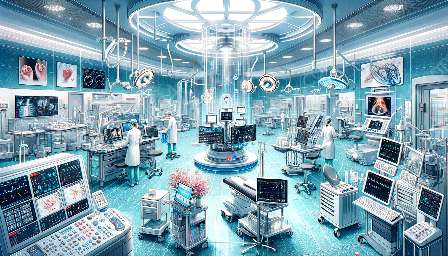When it comes to healthcare facilities, selecting and procuring medical devices is a critical process that involves numerous key factors. In the field of clinical engineering, these factors play a significant role in ensuring the successful integration of medical devices into patient care. From functionality and safety to compliance and cost-efficiency, healthcare facilities must carefully evaluate and prioritize these factors to make informed decisions.
Functionality
One of the most crucial factors in selecting medical devices for healthcare facilities is functionality. The devices must be capable of performing their intended functions effectively and efficiently. This includes considerations such as accuracy, reliability, and user-friendliness. Clinical engineers and healthcare professionals work together to assess the functionality of medical devices to ensure that they meet the specific requirements of the facility and align with the standard of care.
Safety
Ensuring the safety of patients and healthcare staff is paramount when procuring medical devices. Safety features, such as built-in alarms, fail-safes, and infection prevention mechanisms, are essential considerations. Additionally, healthcare facilities must adhere to regulatory standards and guidelines to guarantee the safety of medical devices. Clinical engineers are responsible for conducting risk assessments and overseeing the implementation of safety protocols to minimize potential hazards associated with the use of medical devices.
Compliance
Adherence to regulatory requirements and industry standards is a critical factor in the selection and procurement of medical devices. Healthcare facilities must ensure that the devices comply with guidelines set forth by regulatory bodies such as the Food and Drug Administration (FDA) and the International Organization for Standardization (ISO). Clinical engineers play a vital role in evaluating the compliance of medical devices and maintaining documentation to demonstrate adherence to regulatory standards.
Interoperability
Interoperability is increasingly important as healthcare facilities integrate various medical devices into their systems. The ability of devices to communicate and share data within a healthcare environment is essential for seamless coordination of care and efficient workflow. Clinical engineers focus on ensuring that medical devices can interoperate with existing systems and electronic health records, enabling comprehensive patient care and data management.
Reliability and Maintenance
Reliability and maintenance considerations are crucial for healthcare facilities to maximize the uptime of medical devices. Clinical engineers are responsible for evaluating the reliability of devices and establishing maintenance protocols to prevent breakdowns and ensure continuous functionality. Factors such as ease of maintenance, availability of spare parts, and manufacturer support are key considerations in the procurement process.
Ergonomics and User Interface
The ergonomic design and user interface of medical devices directly impact the user experience and, ultimately, patient care. Healthcare facilities prioritize devices that are ergonomic, user-friendly, and intuitive for healthcare professionals to operate. Clinical engineers collaborate with end-users to assess the user interface and ergonomic features of medical devices, ensuring that they contribute to an efficient and comfortable working environment.
Cost-Efficiency
While prioritizing functionality, safety, and compliance, healthcare facilities also evaluate the cost-efficiency of procuring medical devices. This includes the initial acquisition cost, as well as long-term operating costs and the potential for cost savings through enhanced capabilities or reduced maintenance requirements. Clinical engineers analyze the total cost of ownership and weigh it against the benefits and value that the medical devices bring to the facility.
Conclusion
When selecting and procuring medical devices for healthcare facilities, clinical engineering professionals must carefully consider the key factors of functionality, safety, compliance, interoperability, reliability, ergonomics, user interface, and cost-efficiency. By prioritizing these factors and engaging in thorough evaluations, healthcare facilities can ensure the seamless integration of medical devices into patient care, ultimately enhancing the quality and efficiency of healthcare delivery.


